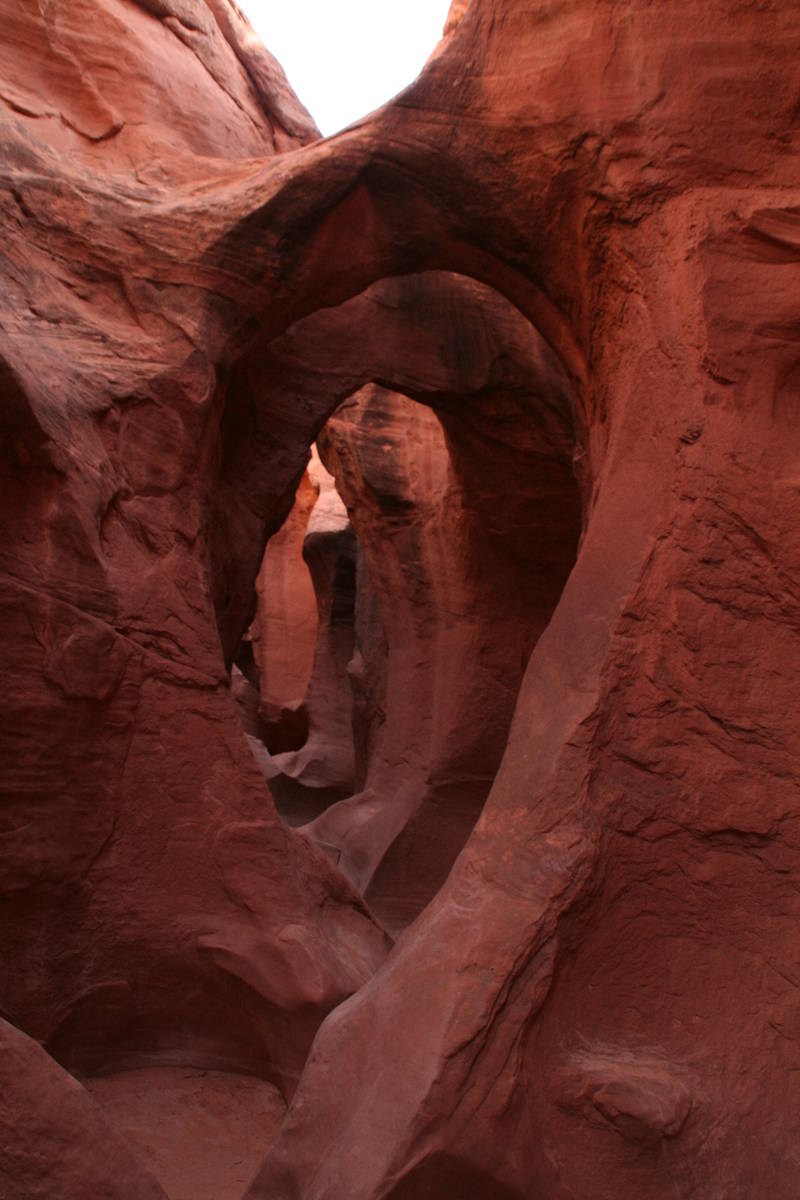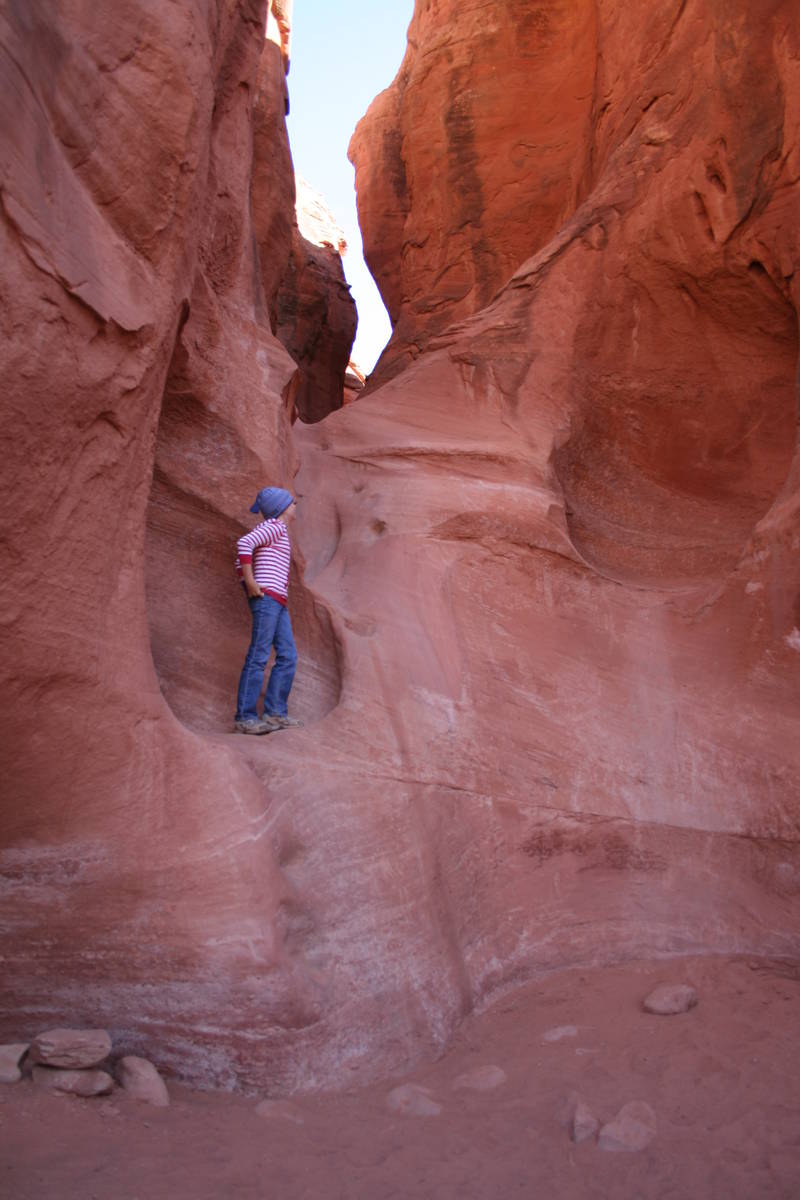2 Utah slot canyons make for easy, fun hike
Grand Staircase Escalante National Monument is located in south central Utah. Established in 1996, it encompasses about one million acres. Grand Staircase boasts some of the Southwest’s most impressive scenery, accessible not only by traveling its scenic byways and backways but also by setting out on foot. Besides its waterways, arches and other fabulous rock formations, it is home to spectacular canyons — including hundreds of slot canyons.
Many of these slot canyons are difficult to reach, some even taking a full day or longer, but a few are easier to get to and can be just as rewarding. One favorite hike is to two slot canyons, Spooky and Peek-A-Boo. Both can easily be visited in one half of a day. This hike is an especially great one of you have adventurous children with you, as long as they can handle the 3.5-mile round-trip distance, 285 foot elevation gain and some rock scrambling.
Mid-September and October tend to be best for a visit, as autumn weather is usually quite stable in this region, with clear, sunny days. In September expect daytime temperatures in the 70s and 80s, and in October, the 60s and 70s. The trailhead is located at 4,950 feet, which means you can probably expect temperatures about 10-15 degrees cooler than in Las Vegas.
From the trailhead the hike starts off on slickrock, where you will be using cairns as your guide. About a mile down you’ll arrive in the sandy Dry Fork Wash. Cross over to the other side and you will see the opening to Peek-A-Boo canyon. It’s about a 12-foot climb and scramble into the mouth of the canyon, but there is often a upright log or fellow hiker to help you up, or you can use the man-made sandstone indentations, which some call Moki steps, to enter.
This is a corkscrew canyon carved by water, which means fun, and it’s colorful to boot, full of red, orange and pink sandstone. It’s a great one to explore; in some areas you will be on your knees, and you will find lots of interesting arches and formations along the way. You can make your way up about two-thirds of a mile to where you will once again see open sky. The easiest way out to return is the way you came.
Once you return to Dry Fork Wash, you will next walk downstream about a half-mile to reach Spooky Canyon. To find it, keep an eye out on your left for the cairns that are directly before a large red sandstone outcropping. You will hike behind the formation for about five minutes to find Spooky. I’ve seen snakes hanging around the opening of the canyon, so watch your step. A headlamp comes in handy to avoid any surprises. Anyone who is claustrophobic will indeed think this one is spooky and should consider waiting outside — this is a really narrow passage. Walk in and travel as far as you feel comfortable, maybe even going farther than you think you can by walking sideways to see a bit more.
Getting there: From the town of Escalante you’ll drive about 12 miles on Utah Route 12 and go right onto Hole-in-the-Rock Road. Take this for 26 miles, then turn left onto Dry Fork Road for 1.5 miles (staying left at the fork). Except for the paved main roads, all roads in this area are gravel, clay and sand, and if it has been dry weather, a high-clearance passenger vehicle with very good off road tires should get you there. If rain threatens or there has been recent rain, stay out, as even a four-wheel-drive vehicle can get stuck.
While fall is an ideal time to travel here, be aware that flash flooding can still happen any day of the year. Too many people have lost their lives heading into slot canyons on a wish and a prayer. Always stop in at the visitor center before setting out, and ask about weather. Overnight permits for car camping and backpacking are easily obtained at some trailheads and campgrounds or at the visitor center. Escalante Interagency Visitor Center in Escalante, Utah, is open seven days a week through mid-November, then Monday-Friday through mid-March. Call 435-826-5499 for more information.

























